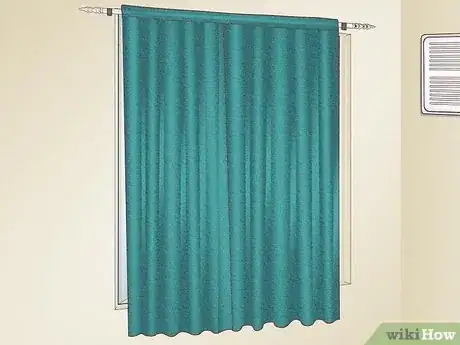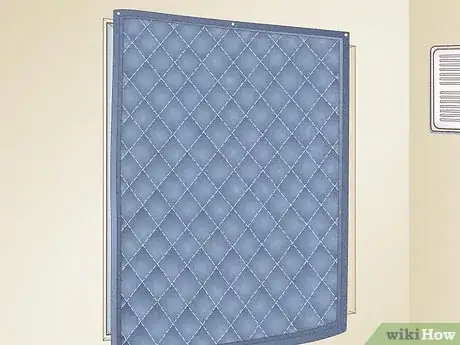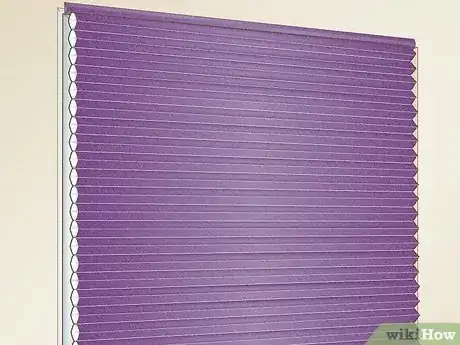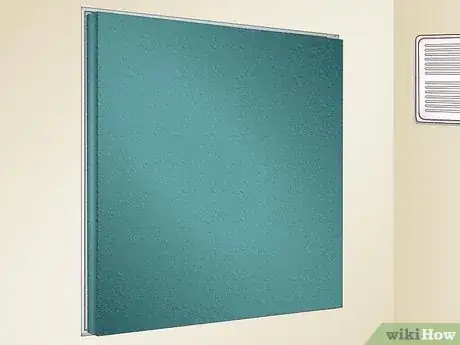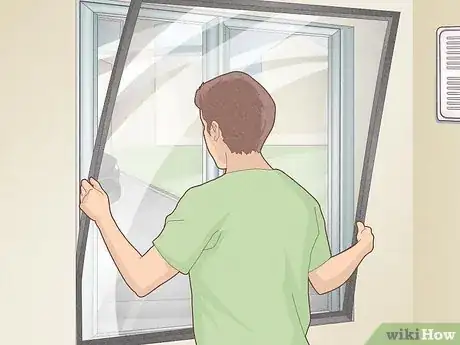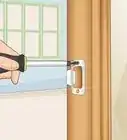This article was co-authored by Andrew Peters and by wikiHow staff writer, Glenn Carreau. Andrew Peters is an Architecture and Construction Specialist and a Principal at Peters Design-Build, a full service architecture and construction firm in the San Francisco Bay Area. With over 20 years of experience, Andrew specializes in sustainable and holistic design and building practices. Andrew holds a Bachelor of Architecture and a Project Management Professional (PMP) certification and is a Leadership in Energy and Environmental Design (LEED)-Accredited Professional. He served as Project Manager for the international-award-winning “Refract House,” Team California’s entry in the 2009 U.S. Department of Energy Solar Decathlon, a project featured in over 600 online and print articles.
There are 8 references cited in this article, which can be found at the bottom of the page.
This article has been viewed 12,354 times.
If you live in an apartment or a noisy neighborhood, soundproofing your windows is a no-brainer. But how can you reduce the noise to a comfortable level, especially if you prefer low-budget DIY solutions? We’re here to help! This comprehensive guide will lay out all of your soundproofing options and show you how to achieve the calm, quiet home you want.
Steps
Fill gaps with acoustic caulk.
-
Acoustic caulk can plug holes between the window frame and wall. Clean the dust and dirt from your window frame and apply acoustic caulk evenly at a 45-degree angle, filling in any gaps letting in the air. Smooth it over with a butter knife or spoon, and leave the caulk to dry. Sound is muffled when air can’t pass through any holes, and the caulk doubles as a noise insulation barrier.[1] X Research source
- If there’s any old caulk on the window, be sure to strip it off with a putty knife before applying new caulk.
- This is an inexpensive option, and you can do it all by yourself at home—no professional required. It’s also doable regardless of where you live (in a house or rental).
Line the window with weatherstripping tape.
-
Weatherstrips both block noise and insulate your home. They’re commonly made from foam, silicone, or rubber. Simply clean around your window jambs before cutting the weatherstripping tape to fit the dimensions of your windows. Press it down firmly so that it’ll stick to your windows and fill any gaps that are letting in the air.[2] X Research source
- While weatherstripping tape is designed to stop rain from leaking into your home, it’s also great for plugging air holes and general insulation.
Rearrange the furniture.
-
Place furniture around the window to naturally absorb noise. Soft furniture with an uneven surface is perfect for dampening sounds. Move a couch or soft chair against the same wall as the window you want to soundproof. A large, thick rug on the floor will also absorb sounds.[3] X Research source Similarly, fabric tapestries hung on the walls are effective noise-dampeners.
- Alternatively, sound bounces off hard furniture when placed in front of the window. You could use a bookshelf or wardrobe to block sound, but you would lose that window’s natural light.[4] X Research source
Hang soundproof curtains over windows.
-
Curtains prevent sound from entering your home and reduce echos. The thicker the curtains, the more sound they’ll be able to absorb. Installation is simple; all you need to do is hang your preferred soundproof curtains from a curtain rod and ensure that the curtains can cover the entire window with extra space on each side. This allows the curtains to absorb as much sound as possible![5] X Research source
- Blackout curtains are also a good option for reducing noise and light since they help you get a good night’s sleep.
Lay soundproof blankets over the windows.
-
Use blankets for a cheap DIY option instead of professional paneling. Soundproof blankets are made from heavy, dense materials, including polyester, fiberglass, woven cotton, and mineral wool, allowing them to absorb noise. Pick up blankets that already have grommets, and use hooks or a curtain rod to hang them over your windows.[6] X Research source
Install thick window blinds.
-
Honeycomb cell shades are especially adept at blocking sound. The honeycomb shape of the blinds helps them insulate your window, not only from outside noise but also from extreme temperatures. Install your blinds of choice for a versatile soundproofing treatment over each window.[7] X Research source
- Alternatively, roman fabric shades can dampen sound and add a pop of color to the house. While they’re typically flat (as opposed to honeycomb), their dense fabric allows them to block sound.
- You can also pair up soundproofing treatments. For example, layering blinds with soundproof curtains offers even more sound dampening in your home.
- Some rentals come with blinds pre-installed, so you may have to check with your landlord before trying this option.
Apply vinyl window film.
-
The vinyl works like a sticker, covering a window and reducing noise. Simply cut the vinyl film to fit the shape of your window and put it in place. Most vinyl or environmental PVC sheets adhere to surfaces using static cling, so it’s easy to stick on, remove, and reuse if necessary.[8] X Research source
- Vinyl film is effective because it minimizes vibrations on the glass panes of your windows, which in turn reduces noise.
- You also have a range of options for window film, as it comes in colored, transparent, opaque, and frosted varieties.
Place acoustic panels around windows.
-
Sound barrier panels absorb noise on both sides of the window. This is a popular DIY soundproof solution if you want to muffle noises inside the house too. Hang them on the walls, in the space around each window you want to soundproof. Acoustic panels are usually made from quilted fiberglass, even thicker than some curtains, to reduce noise and echoes.[9] X Research source
- Panels typically come equipped with grommets (built-in loops for hanging), so they’re easy to hang up on your own.
Install interior window inserts.
-
Inserts are sliding panes you can place over windows’ interior sides. A high-quality insert is often made from tempered glass, and each insert is custom-fit for your window. Install them directly over the inside of windows to sit roughly 5 inches away from the glass. The space between the window and insert catches noise that comes through, so you won’t hear it in your home.[10] X Research source
- Inserts can be costly—typically between $300 and $500 per window—but overall, they’re less expensive than replacing all of your windows with soundproof or double-pane glass.
- Though they need to be installed with screws, inserts can still be possible for renters. Make sure to check with your landlord before buying them!
Set up an outdoor barrier in front of the window.
-
Barriers like shrubs or fences can fragment incoming sound waves. If you have a house with a yard, consider setting up a wood fence to block noise from the street. Alternatively, plant a hedge or row of shrubs in front of your windows; the denser the plant, the more sound it’ll block. This is a convenient and eco-friendly option if you’re already looking to add some decoration to your yard.[11] X Research source
- Unfortunately, this may not be an option if you live in a rental—especially on an upper floor. However, you can always bring this up with your landlord if noise is a problem.
Install double-pane windows.
-
Double-pane windows are effective, but they’re also expensive. A double-pane window has been proven to reduce the noise level in your home by 50%, making it one of the most efficient soundproofing techniques while also insulating your home. They’ll lower your energy bills in the long run but cost a pretty penny to purchase and have installed. Opt for these if simpler DIY options just aren’t cutting it![12] X Research source
- You can alternatively install triple-pane windows, which further drowns unwanted noise.
- Soundproof windows are another viable (but expensive) option, cutting out 95% of outside noise when replacing your old windows.
- Ultimately, installing double-pane windows is the landlord’s decision if you live in a rental. Talk to your landlord; they may agree if nothing else has managed to mute the noise in your apartment.
You Might Also Like

 5 Ways to Fix a Broken Door Frame
5 Ways to Fix a Broken Door Frame

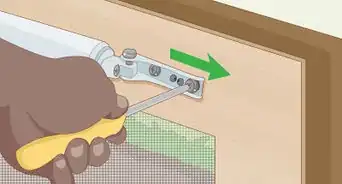
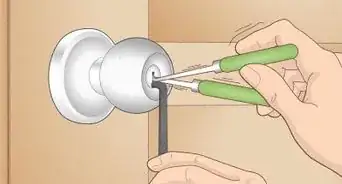 How to Pick Locks On Doorknobs: Knob Types & Lockpicking Tutorials
How to Pick Locks On Doorknobs: Knob Types & Lockpicking Tutorials



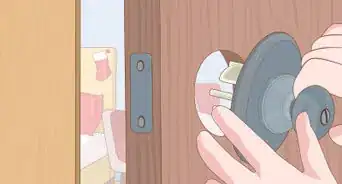

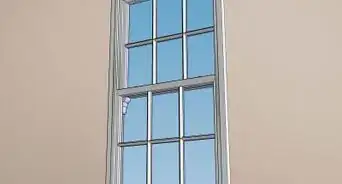
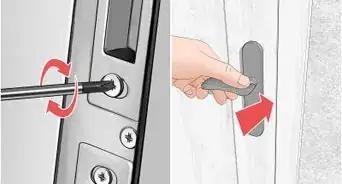
References
- ↑ https://thesoundproofwindows.co.uk/noise-reduction-resources/ultimate-guide-soundproof-windows/
- ↑ https://thesoundproofwindows.co.uk/noise-reduction-resources/ultimate-guide-soundproof-windows/
- ↑ https://removeandreplace.com/2014/12/02/how-to-soundproof-a-window-and-block-noise/
- ↑ https://soundproofnation.com/how-to-soundproof-a-window-cheap/
- ↑ https://soundproofnation.com/how-to-soundproof-a-window-cheap/
- ↑ https://www.wcmanet.org/soundproofing-windows/
- ↑ https://www.21oak.com/home-maintenance/how-to-soundproof-noisy-windows/
- ↑ https://www.wcmanet.org/soundproofing-windows/
- ↑ https://www.wcmanet.org/soundproofing-windows/
About This Article




